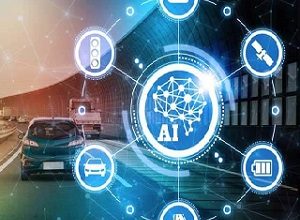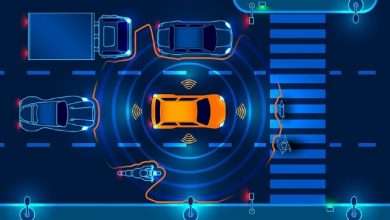French connected car start-up DRUST explains evolution of car-to-driver interface
There is gonna be blood!
Back in the early 20th century, the Ford T man-car interface basically consisted in 2 pedals and a steering wheel. Where are we a century later? Power-trains are definitely more efficient and cars more comfortable, but the steering wheel and the pedals are still here, part of the experience. Infotainment has come to enhance the experience, sure, but are drivers really satisfied with it?

How many times did you catch yourself putting your mobile over your cutting edge multimedia system to enjoy a better service than the one built-in your car? It actually happens everyday now. This is to me the best measure we can see of how big is the gap between embedded services in cars today and the mobile world of services that has been booming over the past 10 years. One thing is for sure: people will not continue to pay thousands for infotainment system that they do not even use, preferring services they already have in their pockets. Here we go, to the biggest disruption of the Man-Car interface around all the related services. Behind the scenes, this is what car connectivity is actually bringing to the Automotive industry.
A whole industry under pressure
Will car makers preempt these markets in a near future? For sure they will claim a piece of the cake. At most we can guess.
What about car makers’ proprietary models? Even Tesla’s CEO Elon Musk reported in an interview that he would foster Android Auto in the Model S, probably one of the best proprietary connected cars nowadays. It seems that the job is just too big: the range of services customers demand in their car is so large that car makers won’t probably be able to develop, maintain and upgrade all services on every car. Plus, numbers of specialized pure players have emerged over the past 10 years, focusing on some very specific use cases and services, doing it well and gaining consumer acceptance.
On the opposite, what about mobiles dominating the Man-Car interface? Mirror Link actually supports this model. Given the development of embedded technologies which enable advanced features and driver-friendly interface minimizing distraction, it is not likely that car makers would totally give it away for a sole mobile.
Finally, what we think is the most likely to happen is cars becoming open app platforms on a mobile-like model. This is at least what Apple and Google seem to be lobbying for. And they are not the only ones: the old Automotive industry is not going to give up; We recently observed it with BMW, Audi and Mercedes acquiring Here. Whatever the standards in the end, there will be only a couple for the whole model to exist. This is actually great news for the drivers! Standardized open platforms (like Android or iOS for your mobile) is the opportunity for app developers – understand service providers – to offer a great and universal experience for the users.
Not our fight
So, which model is going to win in the end? God knows, consumers will choose and win – that’s what digital is for, isn’t it? One thing is for sure: there’s gonna be blood.
But this is not our fight. As a service provider, Drust is technology-agnostic. We are actually able to cope with telematics and non-telematics data stemming from different kind of sources. This is the case for Waze with navigation or BlaBlaCar with car sharing. Even if we all need to start providing our services somehow – through web, mobile, or this OBD plug – services always can adapt to the leading technology. Therefore, in the end, whatever the standard, there will be space for top-quality and consumer-centric services in the connected car space.
As of today
Apart from some happy fews escaped from a motor show or even the CES, current cars are not connected. But the market is not going to wait 10 years for the whole fleet to be replaced by new native connected cars. For instance, drivers are already using connected navigation systems with Waze. Then what about the driving experience? An assistant for the car maintenance? Automatic calls in case of an emergency? Motor insurance contracts? Roadside assistant when needed? Advanced fleet management for companies? Finding buyers for second-hand cars? Programs for teaching young’s the best practices? Advanced solutions to share rides and car? … This lists is endless. This list is what we picture as the Connected Car. And guess what, we can make it happen today.
OBD-II standard is now spread enough across the globe to connect most cars and commercialize such solutions to the mass. This means we now have solutions to address the car aftermarket and bring cars of the past in the future of cars. Nevertheless, this is not going to happen without a couple of challenges.
Speaking about security only, solutions developers must deal with two main issues: personal data flooding and car hacking. A lot can be done by protecting the hardware itself, the software and any kind of wireless communication protocols from Bluetooth to machine-to-machine signals. Especially in Europe, we also see a diversity in the data available on the OBD plug in spite of the EOBD Directive. This is why we developed expertise in delivering a consistent service of a constant quality whatever the data we receive as inputs.
What services then? We have seen a lot initiatives popping around the OBD socket over the past 4 years. Applications range from driver assistance, repair, motor insurance, emergency assistance, IoT, fleet management, car sharing, car renting, car financing, etc. Indeed, using both the smartphone and the OBD bridge to the car make a lot of sense to be able to deliver these connected services today at relatively low cost instead of waiting for the native connected cars to happen. We actually see it as the best opportunity to position the company on services markets already today.
At Drust, we focus on the drivers. We want to bring them the ‘Be A super-driver’ experience they expect. And we may rely on strategic partners to do so. Partnerships with large companies are great opportunities for startups in this space to gain awareness, maximize their reach and even enrich their value proposition.
Should we fear Apple, Google, Samsung, etc. ? Like car makers, they will certainly claim their piece of the cake. Will that be hardware? Software? Even so, we think they would not directly enter consumer-oriented services. Preempting the platform standard is the greatest opportunity for them to charge any transactions that may happen on the services delivered through these platforms, like they already do for mobiles. To that extent, they may be the best allies of app developers to open car data to the community and enable what we see today on mobile/OBD, tomorrow directly into the cars.
What place left for driver assistants in a world… with no drivers?
The autonomous car keeps on raising a lot of concerns: What if the car is hacked? What driving behavior in case of a breakdown? Who’s going to be held responsible for a crash if there is no driver?
Actually there will be a driver. It would just not be a human. But a bot would still need directions to drive efficiently, take care of the car, decides where to go and who would be sharing your ride, etc. Algorithms which would then have helped you as driver to make good decisions for years would therefore enable you to enjoy the ride while telling the machine what to do. We’d better develop them with the help of human drivers first then, right? Then let’s get down to it.
For more information on DRUST product and service offerings, follow the site http://drust.io




